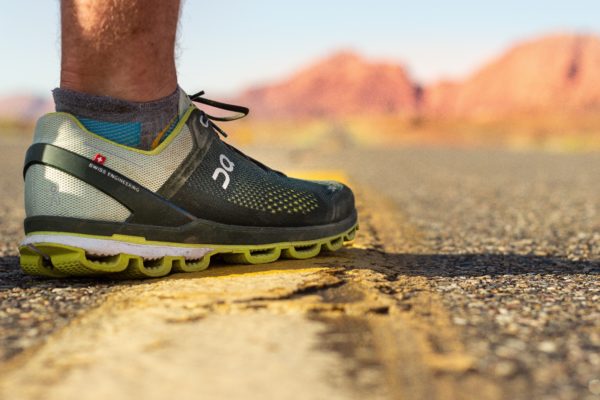We’ve Got Your Number: Brand Names that Use Numbers
At A Hundred Monkeys we know that names are made up of interesting stuff. Sometimes there are rich stories, curious histories, or interesting etymologies baked in. Other times brands include unexpected “characters” like letters from ancient alphabets, mathematical symbols, or numbers. I was curious to explore the latter of these three types of names and set out to find as many names with numbers as I could find. In this exercise I limited my search to zero through ten so that I could focus more energy on the names I found and hopefully make the article less scattershot. I thought I might learn about cultural associations or superstitions related to numbers, but the results of my search were much different from my expectations.
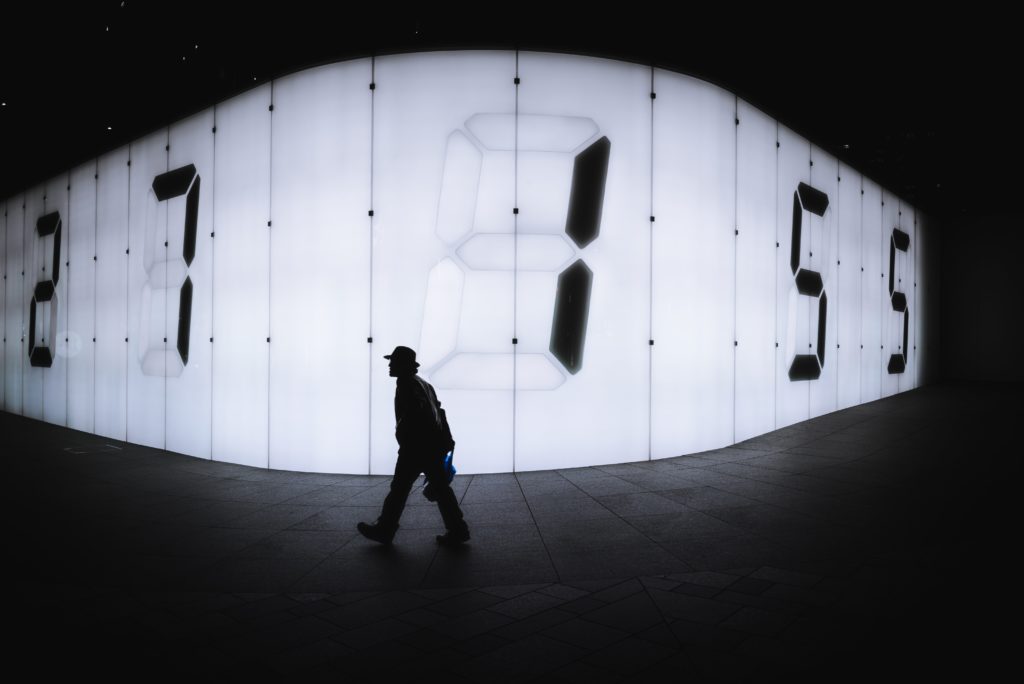
Zero
Sub-Zero: COOLER FOR A CAUSE
The Sub-Zero Freezer Company launched in 1945, but before it was known for its premium status or high-end design it was a passion project for its founder who had begun experimenting with refrigeration to store insulin for his son who had juvenile diabetes. The name was a clear guarantee that Sub-Zero’s products would keep food (or medicine) exceptionally cold. Pushing below the terminal “zero” also gives Sub-Zero a powerful sensation that it can push past an expected barrier.
Coke Zero: THE MINIMUM NUMBER OF CALORIES
Coke Zero came to be in the early 2000s when the Coca-Cola Company figured out how to employ aspartame and acesulfame potassium to create a new soda with zero sugars and zero calories. The name also functions as a promise to find “zero difference” in taste between Coke Zero and its high fructose corn syrup-infused or cane sugar Classic counterpart.
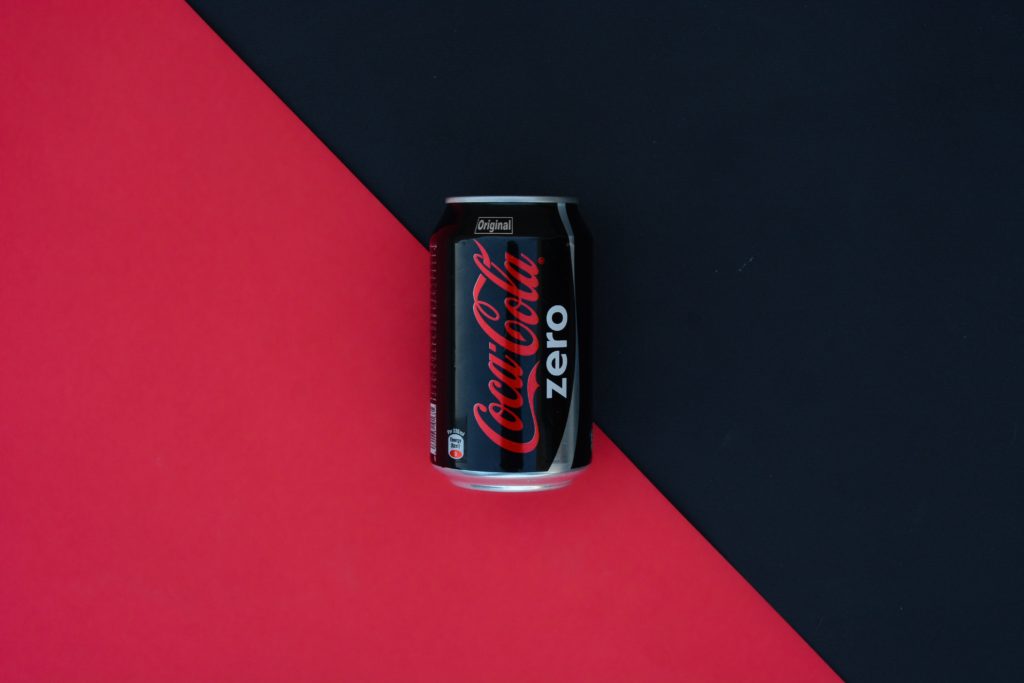
Adizero: ZEROS ON THE BOARD
Adidas has used Adizero to name “light, breathable, and responsive” shoes and cleats, as well as “lightweight poly fabrics” that offer improved freedom of movement. The naming construction here seems predicated on the idea that nothing is lighter than nothing. By accepting the premise that apparel and footwear weight is an impedance worth designing against and marketing for, Adizero blends the Adidas brand name with proprietary materials that can help athletes edge out competitors by the milligram and millisecond.
One
A.1. Steak Sauce: FIRST RATE ROYAL APPROVED
A.1. Steak Sauce has a story dating back to the early 1800s when a chef to King George IV of the United Kingdom, concocted the proto-recipe for this sauce. Supposedly the king declared that the sauce was “A.1.” — a ship insurance term for “first rate” coined by Lloyd’s of London. A couple hundred years later, Kraft Foods deemed that “A.1.” was so recognizable and versatile that they dropped the word “steak” from the product name. After all, it’s good on just about anything.
AND1: ALL FOR ONE AND1 FOR ALL
AND1 is a basketball footwear and clothing company that is known for sponsoring street basketball “mixtape” competitions. The name comes from the phrase commonly spoken when calling one’s own foul and implying that you should receive a free throw opportunity — literally uttering or screaming “and one” at an appropriate time. This interaction is typical of competitive basketball games, and “AND1” thereby uses a bit of jargon to build street cred for the brand, invoking the general attitude and lively conversation that can occur during informal pickup games.

Formula 1: ONE DOING DOUBLE DUTY
Formula 1 (or F1) is the highest class of auto racing in the world. When it was formalized in 1946, it was nearly named “Formula Internationale” or “Formula A.” However, the powers that be ultimately decided that the power of the numeral was paramount and Formula 1 was the best name to immediately convey its status as the premier automotive competition. The name also references the set of rules, or “formula,” to which all participants’ cars must conform — using the number as a standard in two different ways.
Two
2U (f.k.a. 2tor): NUMERAL PREPOSITIONAL
2tor (pronounced “tutor”) is a company that builds online educational programs for universities. The founder originally named it after his dog Gigantor, or “Tor” for short. The company was later renamed 2U to focus attention on the university-level education it provides “to you.” In both iterations of the name the number two was used to phoneticize the prepositional “to” and ultimately, to utilize 2’s flexibility in this fairly common way.
2Wire: THE NUMBER CONDUIT
2Wire was a home networking manufacturer that provided telecommunications companies with hardware and software. The name comes from a “two-wire circuit” meaning one that transmits in two directions simultaneously. Two-wire systems were known for being the economical choice compared with “four-wire circuits” that basically cost twice as much. Unfortunately, while 2Wire hinted at an affordable and efficient network, its eponymous technology has been largely replaced by fiber optic — the company was acquired in 2010 and the name was eliminated. This example is a lesson on being overly product-specific when developing a name and not thinking about the churn of technology.
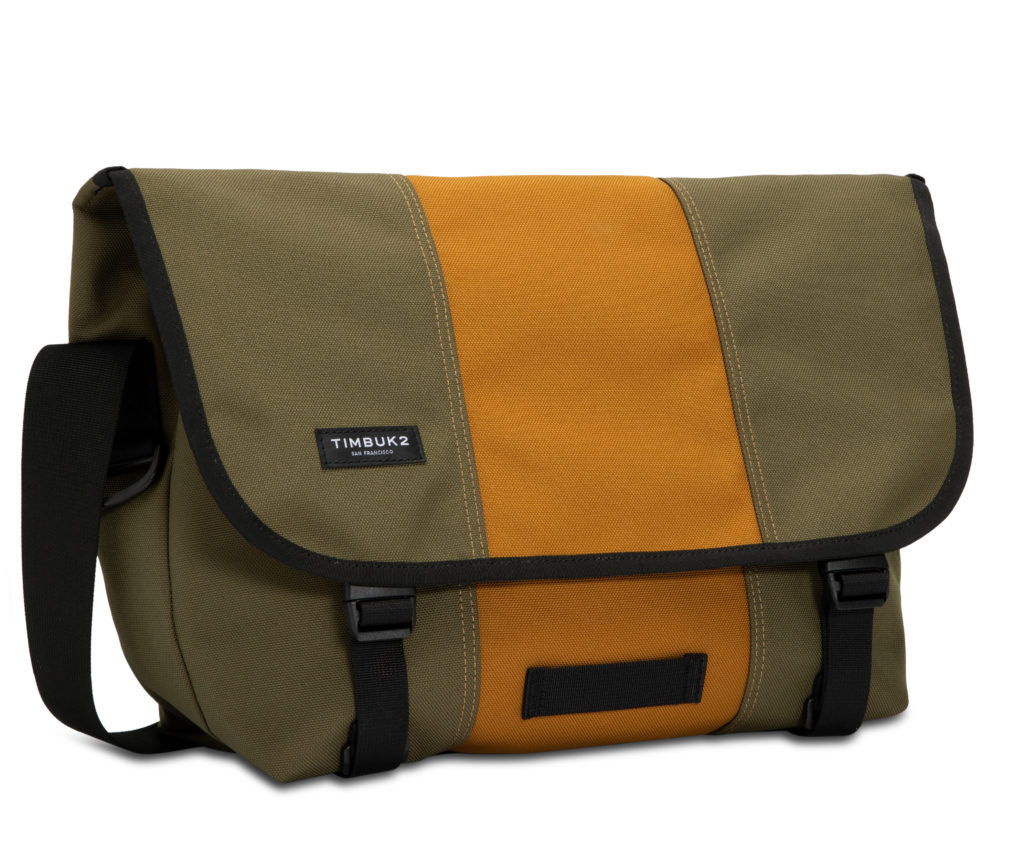
Timbuk2: FROM HERE 2 WHERE?
Timbuk2 is a San Francisco-based bag manufacturer that was originally named “Scumbags.” Their name change was inspired by the colloquialism “from here to Timbuktu” and the company founder’s favorite band, Timbuk3. While atypical, it doesn’t do a lot to enhance a brand story, simply subbing in for a syllable in the most abstract way.
Three
3: ONE GENERATION AT A TIME
3 was created by a Hong Kong-based holding company and named for the third generation (“3G”) telecommunications technology services that they were offering in 2002. A year after the launch, the company officially stated that 3 stood for “their three global telecommunication services: 3G, GSM Dualband and CDMA.” Another example of naming for a numerical and generational technology that would most likely become obsolete in the near future, 3 had to adopt some broad based positioning to make the name work for more than a business cycle or two.
3M: WE ARE THE THREE INITIALS
3M was previously known as the Minnesota Mining and Manufacturing Company. They began as a corundum mine, expanded into the sandpaper racket, and now make about 60,000 unique products. 3M is a good example of how naming styles evolve over time. At the time they opened their mines, the lengthy locational company name sat side by side with the descriptive names of its day. However, as customers and employees grew wearisome of the long moniker, and their notoriety grew they were able to abbreviate to a shorter, more manageable name.
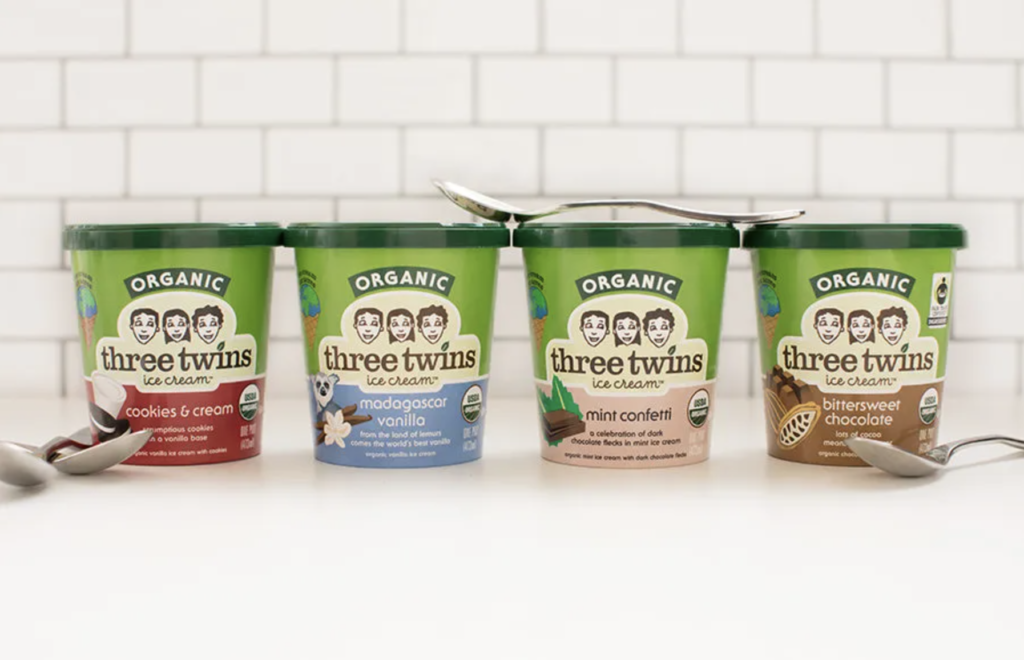
Three Twins Ice Cream: RELATED NUMBERS
Three Twins was the first organic ice cream shop chain in the U.S. and operated several shops in Northern California, including one that was a short jaunt from A Hundred Monkeys’ Berkeley, California office. To answer the question you’re thinking: yes, Three Twins was indeed started by three real-life twins! We loved this name. It had a little humor, a bit of enigma, and engaged the customer with something like a riddle that leaves you curious about the brand.
Four
Four Seasons: I LOVE WHEN THE NUMBERS CHANGE
Four Seasons Hotels are a luxury hotel company that started when a Canadian architect built a stopover motor hotel for business travelers in Toronto. From one motor hotel to a fleet of upscale luxury locations, the name went on to populate 47 countries with 124 properties. The name is universal and temporal. Everyone experiences the four seasons each year and Four Seasons feels like a name that connects the properties even when they are in opposing seasons — maybe even encouraging travel the whole year round.
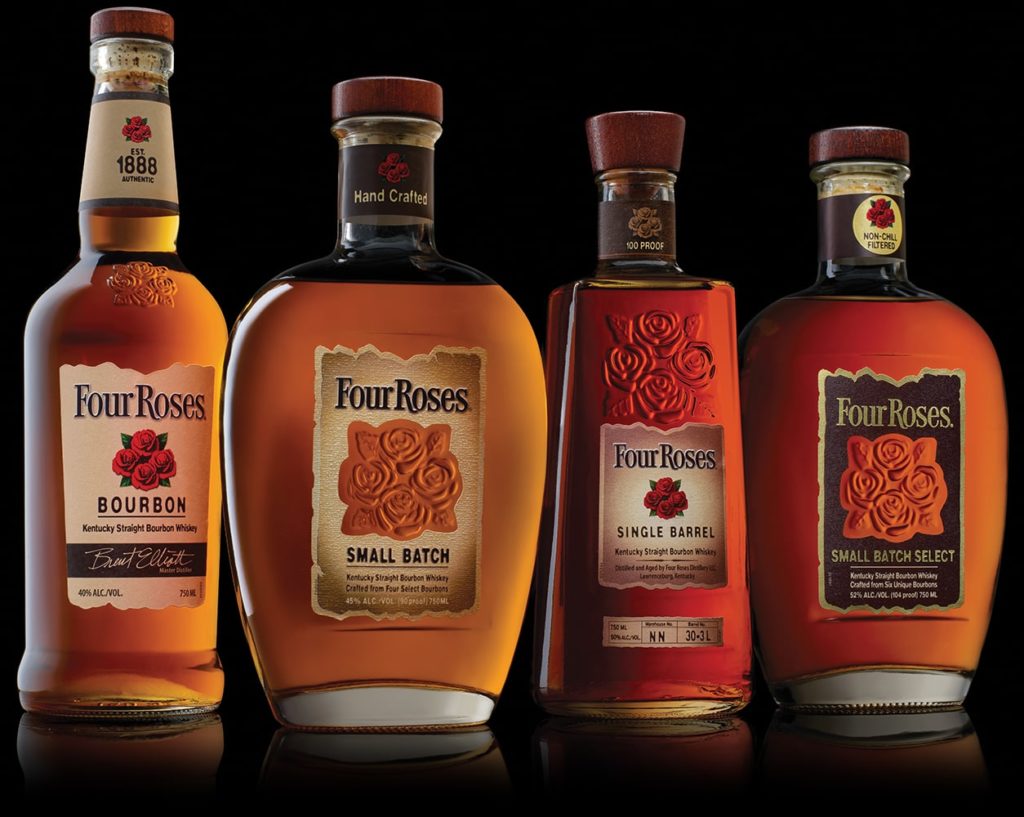
Four Roses Bourbon: FOUR SIGNS OF LOVE
Some names have more than one “legend” leading to a number in their name. By one account the founder of Four Roses Bourbon fell in love with his wife-to-be and amidst their courtship she indicated a positive response to his proposal by wearing a corsage of four red roses to a ball. Later, the story goes, he would name his bourbon “Four Roses” to show his (equivalent?) passion for his wife and the liquor. These days, the bourbon’s owner (Kirin Brewery) considers this tale to be canon and the name lives on as a sign of love written in flowers.
Four Loko: FOUR CORE AND SEVERAL SIPS AGO
The sometimes problematic beverage Four Loko derived its name from its four key ingredients (caffeine, taurine, guarana, and malt liquor) and a misspelling of the Spanish word for “crazy.” The four ingredients had implicitly combined for some unpredictable and unintentionally forgettable nights, showing it was fair to have the number at the heart of the product name. However, after Four Loko was banned in several states the manufacturers were forced to remove the caffeine, taurine, and guarana. That’s a full three less lokos as I count, but no rename is on the itinerary at this time.
Five
Take 5: TAKE A BREAK WITH THESE INGREDIENTS
The Take 5 candy bar’s name primarily refers to its combination of ingredients: chocolate, peanuts, caramel, peanut butter, and pretzels. The name seems to have a richer story, if we think about the notion of “taking (a) five” minute break. In an interesting twist, Take 5 used to be known in Canada as a “Max 5”, but was renamed “Oh Henry! Level Up” with an apparent reference to video game culture. In the original American name, the double entendre feels like a perfect break to enjoy a sweet treat.
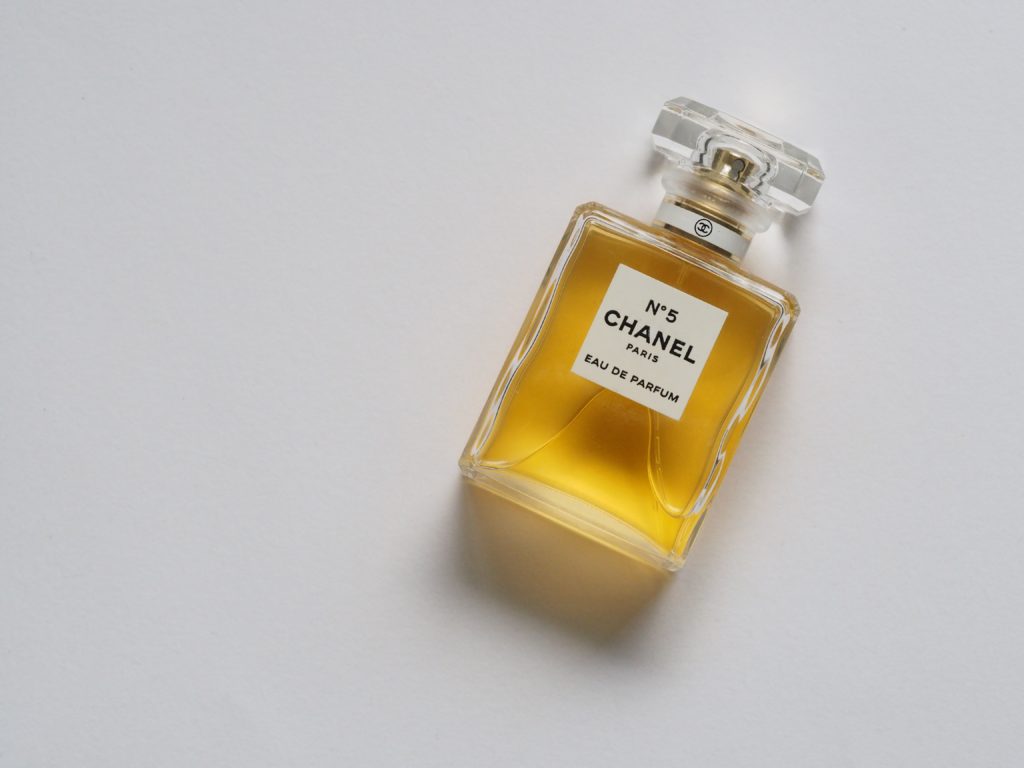
Chanel N° 5: FIVE OUT OF FIVE
The name for this famous perfume comes from the “blind” test that its creator conducted with fashion designer Gabrielle “Coco” Chanel. He offered her five perfume compositions and she chose the last sample as her favorite. This process piece of a genesis story is compelling and draws us into the room when the decision was made to take this ultimate scent of Chanel N° 5 to market.
5: SENSE > CALORIES
5 is a brand of chewing gum made by Wrigley. In attempt to market to a new, younger audience they decided to play upon the senses, referencing all five of them with this name. The five senses naming direction is supported by their tagline, “Stimulate Your Senses.” The gum also has exactly 5 calories per piece, but that doesn’t feel like an engaging detail when talking to teenagers. Rather, being able to play on taste, smell, touch, and the other implicit sensations one might feel while chewing the gum is a potent method for naming.
Six
Motel 6: ROOM RATE NAME
In1962, Motel 6 was founded in Santa Barbara, California by two contractors who wanted to build low cost motels. They arrived at a room rate of $6 per night based on calculations including building costs, land leases, and janitorial supplies. By creating and continuing to serve a market that wanted basic, affordable lodging, Motel 6 has been able to maintain their name as a symbol of their commitment to economical accommodations.
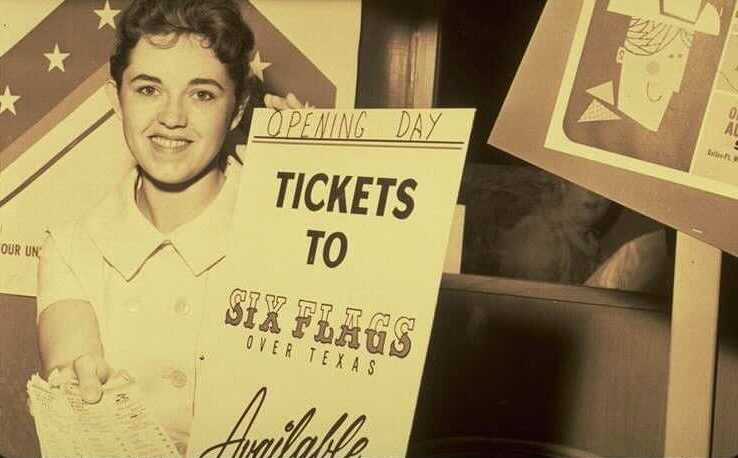
Six Flags: SOME TEXAS HISTORY
Six Flags opened its first turnstiles in Arlington, Texas under the moniker “Six Flags Over Texas,” a reference to the six nations that have governed the Lone Star State over the years: Spain, France, Mexico, the Republic of Texas, the United States, and the Confederacy. While making reference to one problematic (if honest) point in history, the numerical name afforded Six Flags the opportunity to change to more anonymous flags down the line. Most people likely being unaware of the history behind the neon, multicolor flags in the modern logo and imagining that they are literally a symbol of many high-flying attractions.
Seven
7 Up: THE MYTHS OF SEVEN
On the eve of the Wall Street Crash of 1929, a new lemon-lime soft drink was launched called “Bib-Label Lithiated Lemon-Lime Soda” — it had paper tags, or “bibs”, and would contain lithium citrate, a mood-stabilizing drug, until 1948. One of many “patent medicine products” on the market the name was shortened to “7 Up Lithiated Lemon Soda” and finally to simply 7 Up. There are several claims as to where the “7” comes from: the number of main ingredients, an approximation of lithium’s atomic mass, the fact that it was originally sold in 7-ounce bottles, a reference to curing different kinds of hangovers, or the founder’s luck at poker and craps tables. However, no definitive answer is known. It’s interesting to note that numerical names inspire this kind of curiosity when there isn’t a clear story, possibly enhancing the brand’s popularity with urban legends retold.
7th Generation: TAKE FROM THE NUMBER, GIVE BACK TO THE NUMBER
The eco-friendly cleaning products company 7th Generation derives its name from the “Great Law of the Iroquois,” which says that when making a decision one should consider the impact of their actions on the next seven generations of people. This name captures the imagination with what it can mean to impact subsequent generations of your family and community, and at its best can foster environmental stewardship beyond simply using their products.
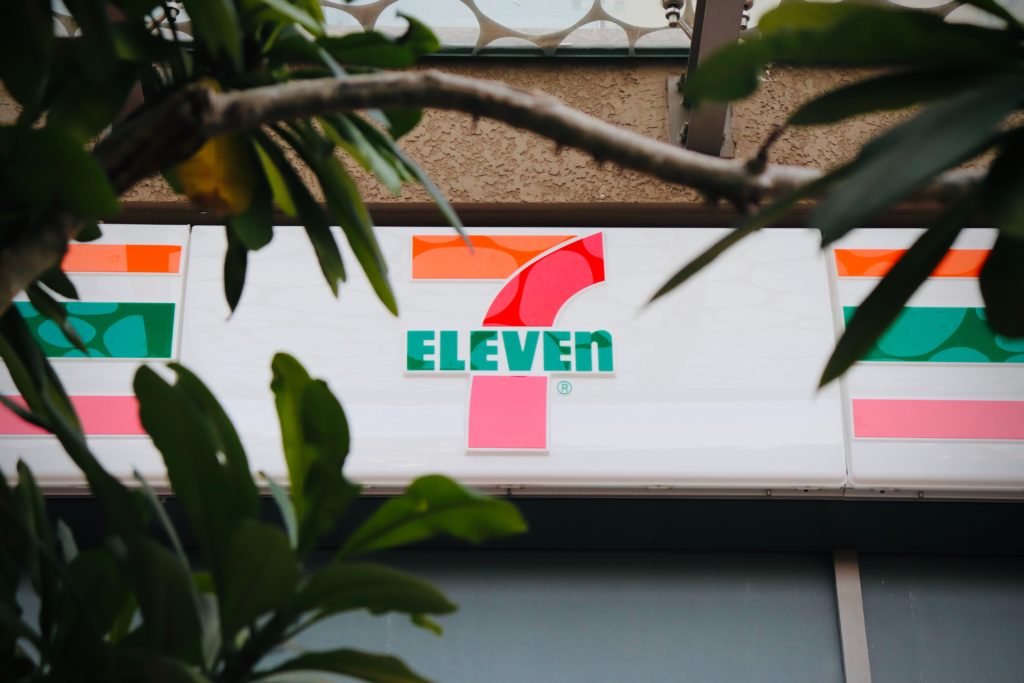
7-Eleven: AT THE STRIKE OF SEVEN
7-Eleven, the multinational brand of convenience stores, was originally founded in Dallas, Texas under the name “Tote’m.” This original name was based on the fact that customers “toted” their items away after purchase and that most Tote’m Stores indeed had a “native” totem pole in front. In 1946, the chain’s name was changed to 7-Eleven to reflect the company’s unprecedented, extended hours of 7 a.m. to 11 p.m. every day of the week. The change made sense to clarify their hours of operation when they would be considered a distinct competitive advantage over similar stores. Like some other names on this list it marks a time when the brand grew expansively, meaning that when 7-Elevens started being open 24 hours the name remained the same for brand equity and to honor the history.
Eight
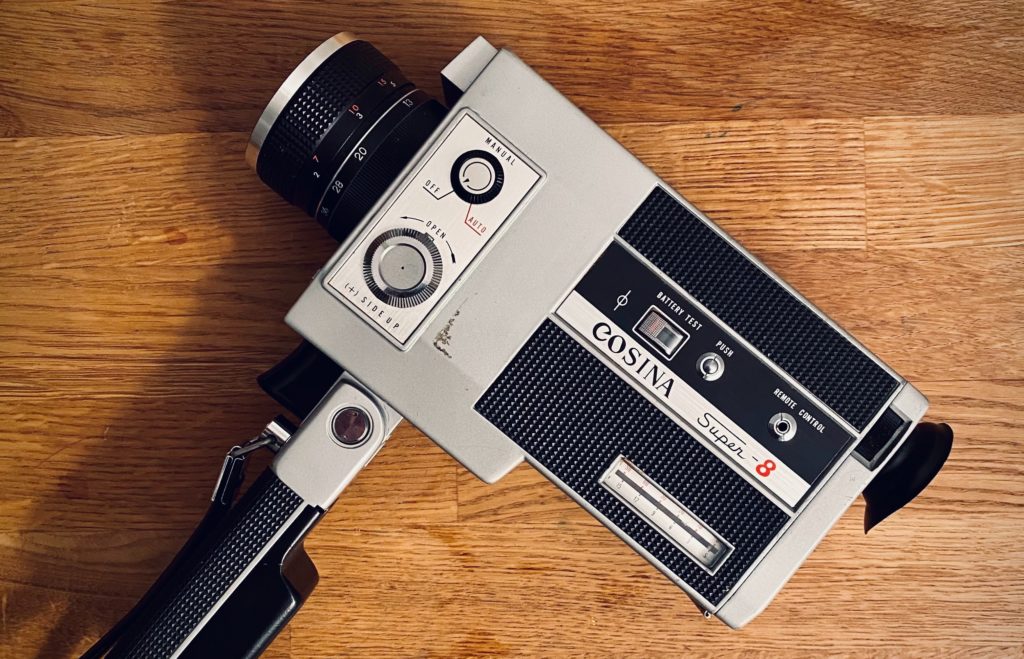
Super 8: MEASURING UP TO THE NAME
Super 8 motion picture cameras get their name from using film that is 8mm wide. Both the film format and cameras were developed by Kodak for amateur filmmakers — replacing the earlier “Standard 8mm” film format, which had a slightly smaller frame size. Super 8 feels less formal and more playful for its anticipated audience of amateur home movie makers. It also uses an “ingredient” reference to its size to create ease when shopping for film or other accessories.
V8: THE POWERFUL EIGHT
One of the more well-known number names is V8 Vegetable Juice which got the name from its eight different ingredient vegetables. The juice was developed by a company that made individual vegetable juices under the brand “Vege-min.” As a result, when V8 was first concocted it was known as “Vege-min 8” and later “V8 Vegetable Cocktail Juice.” There is one, possibly apocryphal tale, that V8 also received its name in reference to the V8 engine that was developed around the time that V8 was and stood as a symbol of power and ingenuity. Regardless, there was novelty to literally squeezing the nutrients of 8 different vegetables into one can and enjoying them in one convenient drink.
Nine
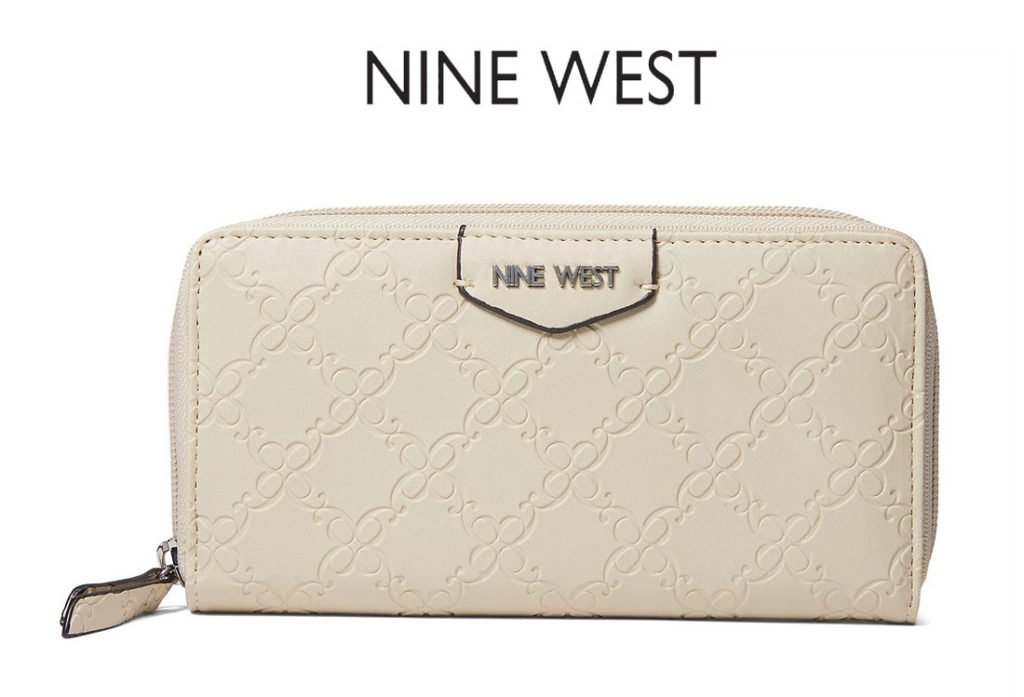
Nine West: LOCATION LOCATION LOCATION
Nine West was named for its founding location at 9 West 57th Street in New York City. When it began to expand (initially to a specialty shop in Stamford, Connecticut) it kept the same name despite being across state lines, not to mention across the street. The brand has now transported the mystique, culture, and style of that specific slice of Manhattan to hundreds of locations and customers around the world.
Cloud9: EXHILARATING INTEGRATED DEVELOPMENT ENVIRONMENTS
Originally called Cloud9 IDE (for Integrated Development Environments) the company developed a software product rich with tools and capable of helping teams simultaneously edit code in the cloud. Cloud9 helped programmers develop software in a slightly more “euphoric” manner than before, making an apt pun for their tech sector and the joy of using their product.
Ten
Big 10: NINE, TEN, FOURTEEN, SIXTEEN?
The Big 10 Conference (formally the Big Nine and the Western Conference before that) is the oldest collegiate athletic conference in the U.S. and currently has 14 members, two affiliate members, and two future members (in UCLA and USC). For a large part of its history, the conference consisted of ten universities and, well, that stuck. Those in charge had some foresight in not referencing their geographic region in the conference name thereby allowing it to expand from the Midwest to the Pacific coast without too much confusion. However, the number that is core to its name versus its total member count presents a little bit of confusion. It begs the question when the conference would change to the Big 20 if it ever reached that next multiple of ten. Ten has an anthropological air of finality, but maybe they can acknowledge our ability to count on our toes.

10% Happier: A GOOD PERCENTAGE
After having an on-air panic attack, journalist Dan Harris decided to pursue a second career studying and evangelizing meditation. He started a podcast called 10% Happier and wrote a book of the same name, in which he explores a “watching the breath” method of meditating and explains how meditation can broadly help with self doubt, anxiety, and stress reduction. While Harris explores the “conflict between meditation-induced equanimity and the aggressive competitiveness required for success” in the professional world, his meditation work is generally about being incrementally happier and healthier, which feels both comforting and encouraging.
Tencent: GALLOPING FAST INFORMATION
Tencent is a Chinese multinational technology and entertainment company that is known for its investments in video game publishing. Their name is based on the Chinese name Tengxun (腾讯), which incorporates part of the founder’s Chinese name and literally means “galloping fast information.” Functioning in two languages is typically hard to pull off for a name. On one hand, the English translation includes a term that is easy to grasp by English learners (10¢), but could come off sounding cheap in some contexts. On the other hand, while referencing the founder’s name with a homophone it makes an important connection for the guy in charge.
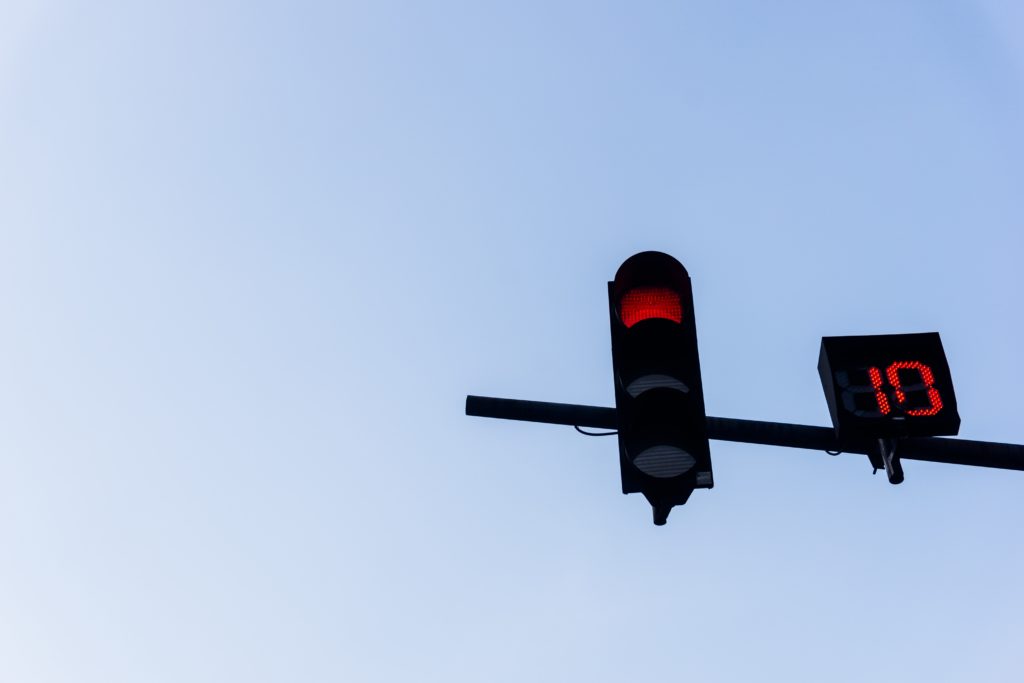
Numbers show up in names in many specific ways. On this search, I didn’t find number or pricing psychology, culturally-specific good luck numbers, or deep philosophical engagement with any given number. However, I did find that companies include numbers in their brand names for reasons that are core to their history or personality. In many cases, we see these brands grow and push beyond a possible limiting factor of their “number name” — that was originally based on technology, ingredients, price, location, hours of operation, organizational scale — and continue to embrace that logically askew number for brand equity. There seems to be something universally appealing about numbers so it follows that when it’s appropriate to use them in a name founders or CEOs will feel comfortable doing so. At least until the next trend of Sumerian cuneiform characters gets some steam.
Thanks to Eli Altman, Patrick Keenan, and Carolyn McDermott.

